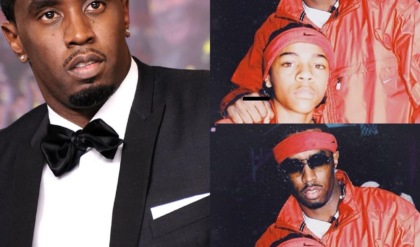
For decades, Superman has been the shining beacon of justice, hope, and the American way. His role as the quintessential superhero is so deeply ingrained in popular culture that it’s almost impossible to imagine a world without him. However, the Superman we know and love today is not the character that was initially conceived by his creators, Jerry Siegel and Joe Shuster. The truth is, we’ve been wrong about Superman’s role for years, and it’s time to set the record straight.
The Origin of Superman: A Different Beginning
Superman first appeared in Action Comics #1 in 1938, but the character’s journey began years earlier, in 1933. Initially, Siegel and Shuster envisioned Superman as a villain—a far cry from the hero who would become the symbol of all that is good and just. Their first Superman was a bald, telepathic supervillain intent on world domination, featured in the short story “The Reign of the Superman.” This early incarnation was more akin to Lex Luthor than the heroic figure we associate with the name today.
It wasn’t until years later that Superman was reimagined as a hero, drawing inspiration from various sources, including science fiction pulp magazines and the Jewish heritage of his creators. Siegel and Shuster’s revised Superman was not only a hero but also a defender of the oppressed, a champion for the little guy, which resonated with the public during the Great Depression.
Superman’s Role: Protector of the Oppressed
Superman’s early stories were far more politically charged than many people realize today. He was a crusader against social injustices, often taking on corrupt politicians, abusive employers, and criminals exploiting the downtrodden. In Action Comics #1, Superman isn’t battling alien invaders or supervillains; instead, he’s rescuing an innocent woman from an abusive husband and stopping a lynch mob.
This version of Superman was a direct response to the societal issues of the time. His role was that of a social justice warrior—a term that may sound modern but is deeply rooted in the character’s history. Superman’s creators used the character to address the issues they saw around them, making him a hero not just in the physical sense but also as a moral and ethical force for change.
The Shift: From Social Crusader to Global Icon
As Superman grew in popularity, his role began to evolve. The character became more fantastical, facing off against supervillains, alien invasions, and threats of cosmic proportions. This shift was partly due to the changing landscape of comic books and the need to appeal to a broader audience, but it also reflected the growing status of Superman as a global icon.
By the time World War II rolled around, Superman had become a symbol of American patriotism. His role shifted from a social crusader to a defender of the nation and its ideals. This transition was cemented in the post-war era, where Superman was portrayed more as an all-powerful protector of the world rather than a champion of the downtrodden.
Misunderstood: The Modern Superman
In recent years, Superman has often been criticized for being too powerful, too righteous, and too disconnected from the struggles of ordinary people. Some see him as an outdated relic of a bygone era, a character who doesn’t resonate with the complexities of modern life. However, this criticism overlooks the rich history and the true role Superman was meant to play.
Superman is not just a character; he’s an ideal. He represents the best of humanity—the hope that no matter how dark the world becomes, there is always light. The real story of Superman is not about his powers or his battles against otherworldly foes; it’s about his unwavering commitment to doing what’s right, even when it’s not easy. It’s about his role as a symbol of hope, justice, and the belief that one person can make a difference.
The Real Superman: A Reflection of Us All
So, what is Superman’s real role? He is a mirror, reflecting our hopes, fears, and aspirations. He’s the embodiment of the struggle for justice in a world that often feels unjust. Whether he’s battling intergalactic threats or standing up against social inequality, Superman’s true power lies in his ability to inspire us to be better, to strive for a world where everyone can be their own hero.
We’ve been wrong about Superman’s role for years, but now it’s time to see him for what he truly is—a symbol of the enduring fight for truth and justice, a character who, no matter the era, always finds a way to resonate with the human spirit. Superman is not just a superhero; he’s a beacon of hope for all of us, reminding us that no matter how powerful we are, it’s the choices we make that define who we are.
Conclusion
Superman’s story is one of evolution, adaptation, and resilience. His role has shifted and changed over the years, but his core remains the same. He is a hero for all times, reflecting the values we hold dear and challenging us to rise to the occasion. The real story of Superman is not about his battles but about his heart, his unwavering dedication to justice, and his timeless role as a symbol of hope in an ever-changing world.
News
Cardi B surprised her 170 million followers with her bold action during a livestream, showing off her breasts to celebrate the release of her new music video! – S
While livestreaming on her personal page with nearly 170 million followers, female singer and rapper Cardi B suddenly opened her shirt to show off her bust because she was excited about the release of her new MV. At a livestream on…
Chrisean Rock Finally “Breaks Silence” On Cardi B’s Cheating Claims With Offset – S
In this jaw-dropping update, Chrisean Rock spills the tea on the recent scandal involving her and Cardi B’s ex, Offset. Things are about to heat up as she addresses Blueface’s cheating allegations, leaving fans on the edge of their…
Cardi B and Offset turned up the sexy heat as they enjoyed his “Set It Off” album release party in Miami. – S
Cardi B and Offset create a sexy vibe as they party the night away at his Set It Off album release party in Miami Cardi B and Offset created a sexy tone as they partied the night away in Miami Friday. The couple…
Irrefutable video evidence has been discovered of Offset having a relationship with Chrisean Rock, as the two are seen kissing each other in public: The truth is shocking! – S
After confirming her breakup from Offset during an Instagram Live on Sunday amid rumors he cheated on her with Chrisean Rock (which he has denied), the WAP star returned to the ‘gram on Friday with a heartbreaking, rage-induced rant! In the stream, which was captured and reposted by various outlets,…
Cardi B just shocked the world when she revealed on live TV that “Blue Ivy is p.r.e.g.n.a.n.t!” and didn’t forget to send a surprise congratulation. What’s going on? – S
In a shocking twist that has the internet buzzing, Cardi B set social media on fire after claiming that Blue Ivy, the daughter of Beyoncé and Jay-Z, is pregnant! The unexpected announcement came during a live TV interview when Cardi…
Cardi B Dragged Into Nicki Minaj and Megan Thee Stallion Beef As Social Media Reacts To “Hiss” – S
The Ongoing Feud: Cardi B, Megan Thee Stallion, and Nicki Minaj The hip-hop landscape is buzzing with tension as the feud between Megan Thee Stallion and Nicki Minaj intensifies. In the center of this storm is Cardi B, a fierce…
End of content
No more pages to load











